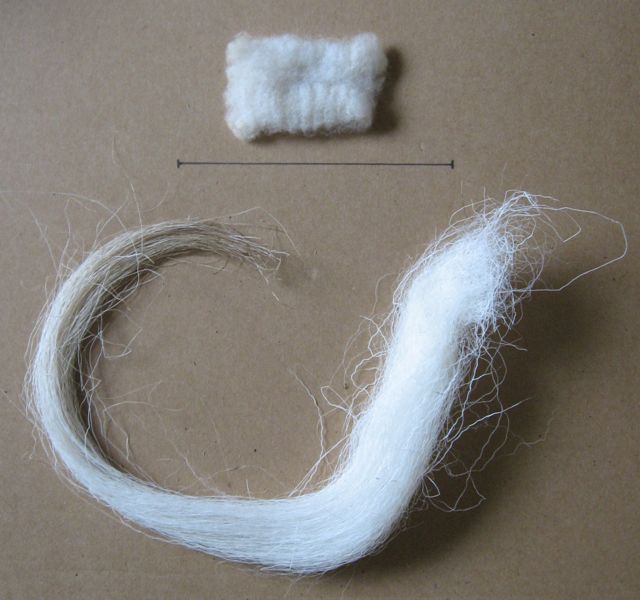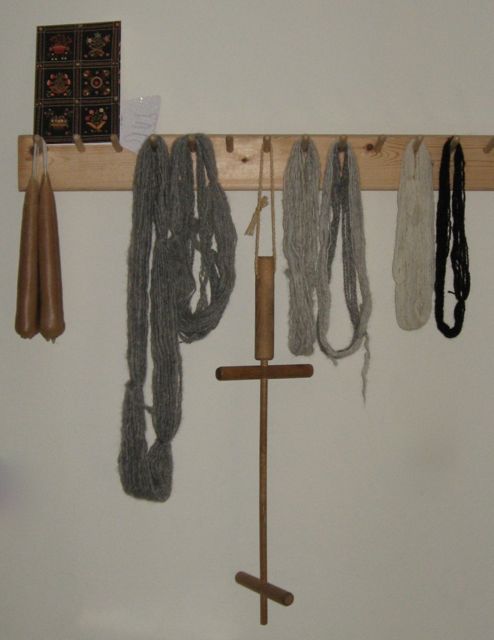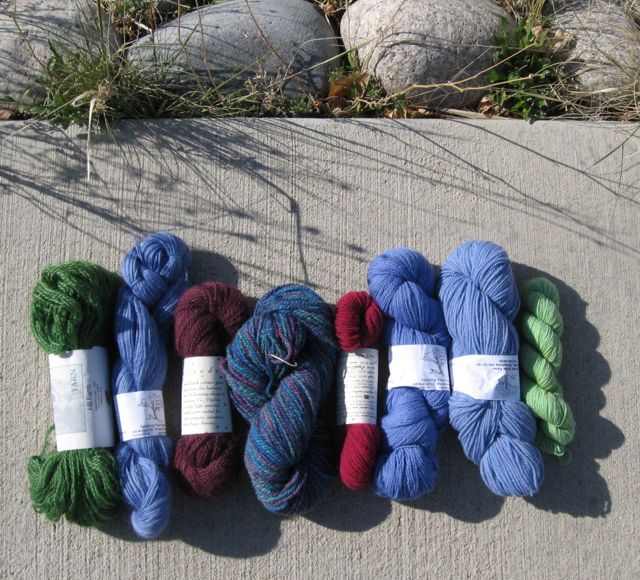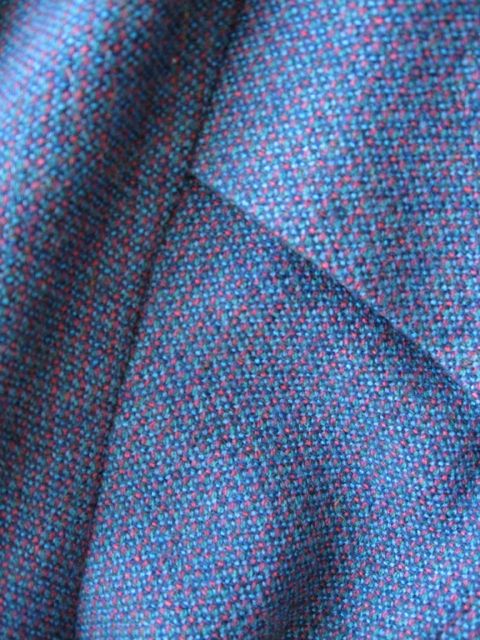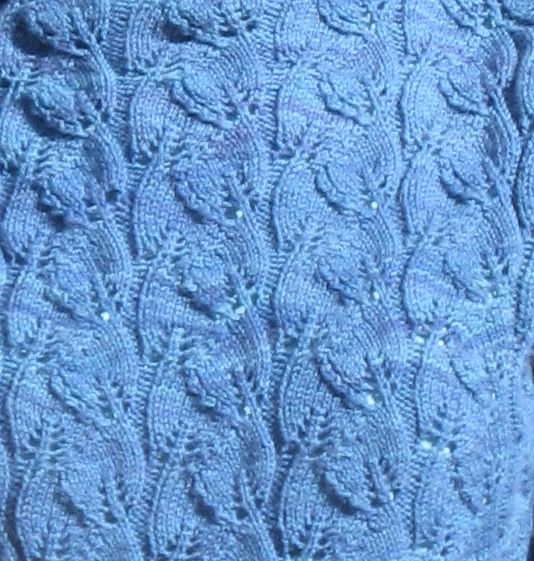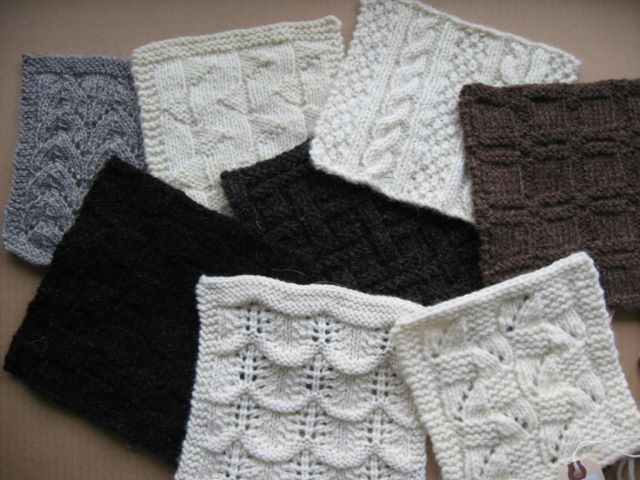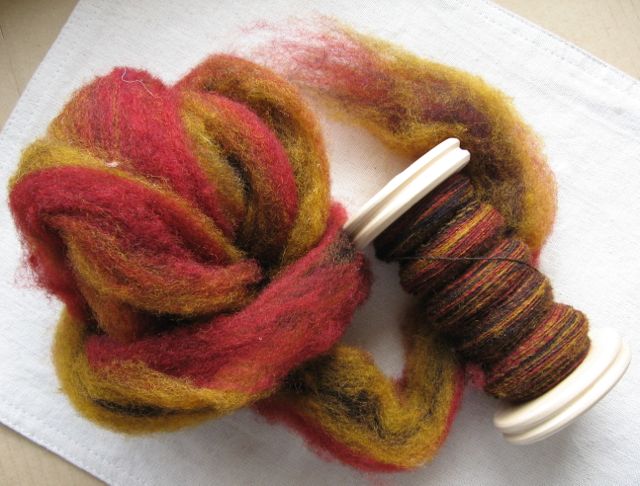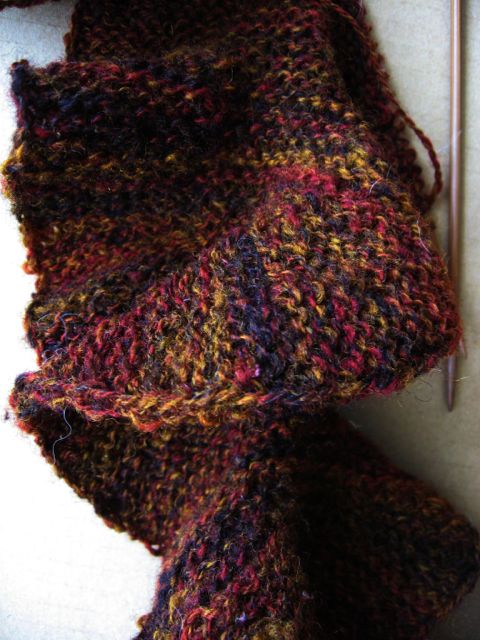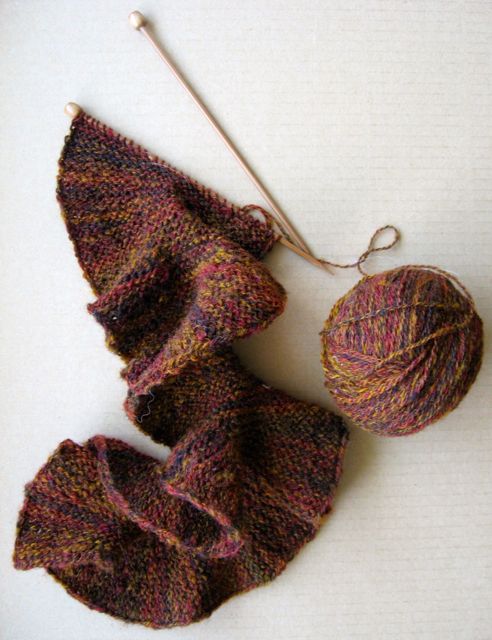Deb Robson has already shared some of her wonderful sheep photos with us here, as well as her thoughts on ‘Processing Wool‘ and ‘Harvesting Wool…‘. What is lovely about so many of our fantastic WOVEMBER contributors, is the hand they have in all stages of WOOL’s life… from it’s growth on the back of a sheep to its later incarnation as a scarf or a sweater. So it is that today we continue with Deb’s ongoing work with wool to the stages of that work which concern hand knitting and hand spinning garments. WOVEMBER loves seeing how this work with wool draws from Deb’s other work of writing about wool, teaching about wool, and special interest in the different qualities and characters of different sheep breeds’ fleeces…
01 – Wool grows in myriad types, and how it is used depends on what it is like. Delaine Merino (above) is soft enough for almost anyone. Rough Fell (below) is fascinating and versatile, but not wisely employed for the construction of luxury garments.
02 – There’s nothing quite as satisfying as working with handspun wool. (Those are hand-dipped beeswax candles that a friend made on the left, and that’s one of my favorite wooden tools, a modern niddy noddy for winding skeins, hanging from the peg in the middle.)
03 – Wools of all types can be used to make garments and household items. These skeins range from very durable (on the left) to very soft (on the right). Matching the specific wool to its intended use is the secret of success.
04 – Weaving with wool produces exquisite and versatile fabrics, although most hand workers knit or crochet with it.
05 – Knitted wool fabrics can be plain or intricately patterned.
06 – Each wool type provides a unique combination of color, texture, bulk, and durability.
07 – Here’s the transformation from carded roving to a freshly spun bobbin… (The fiber is Gulf Coast Native, commercially carded, hand-dyed by Spirit Trail Fiberworks.)
08 – To a knitting project (this is the above yarn, two-plied).
09 – To a half-finished scarf. (The pattern is “Helix,” by Stephenie Gaustad.)
All content used in this post © Deb Robson and used with her kind permission
